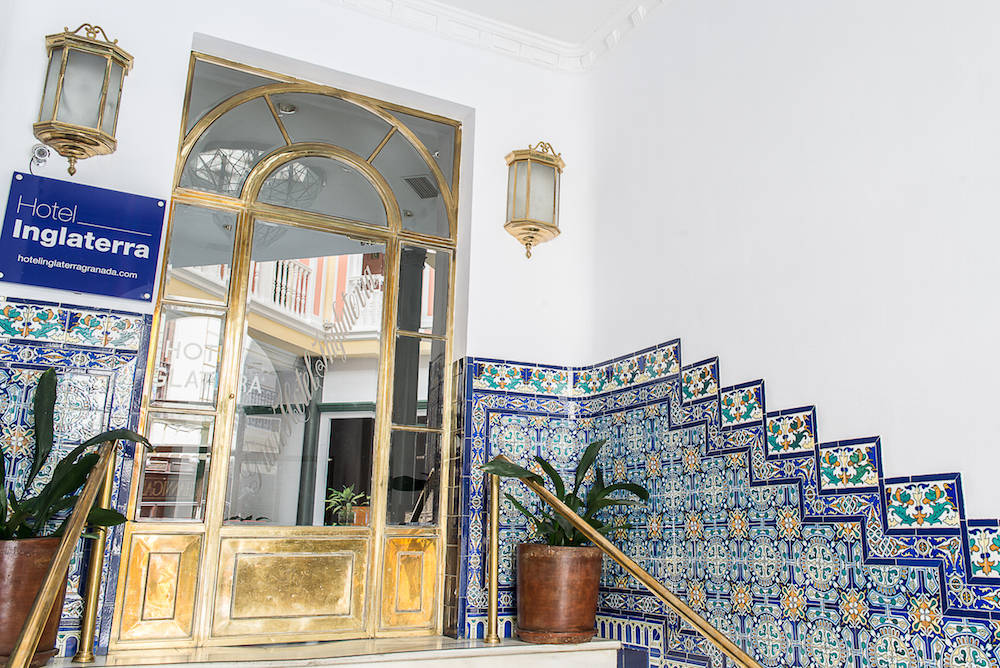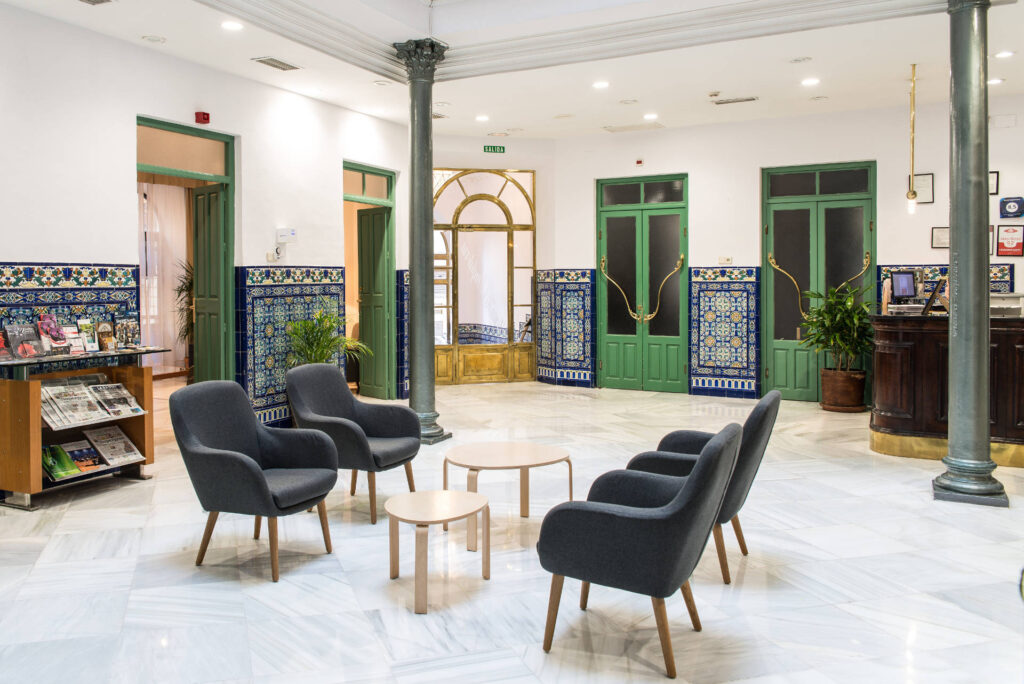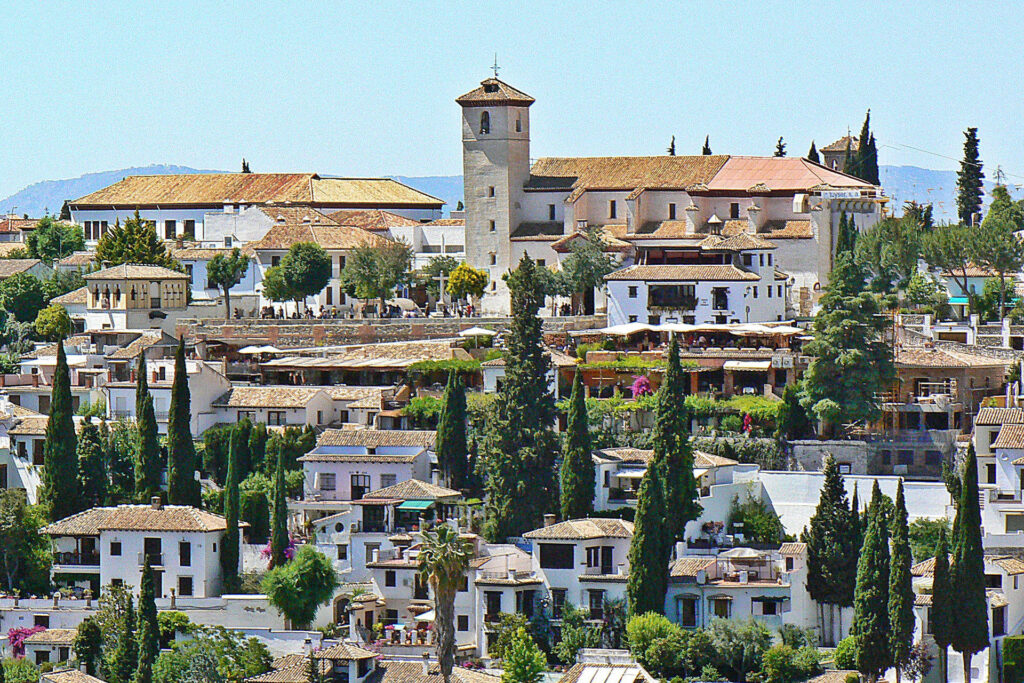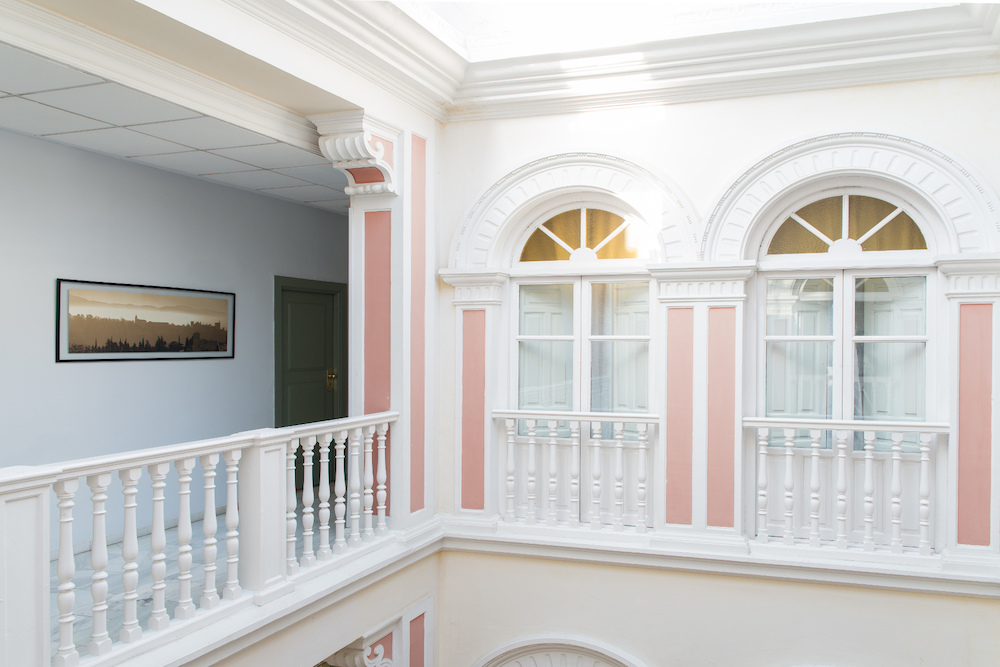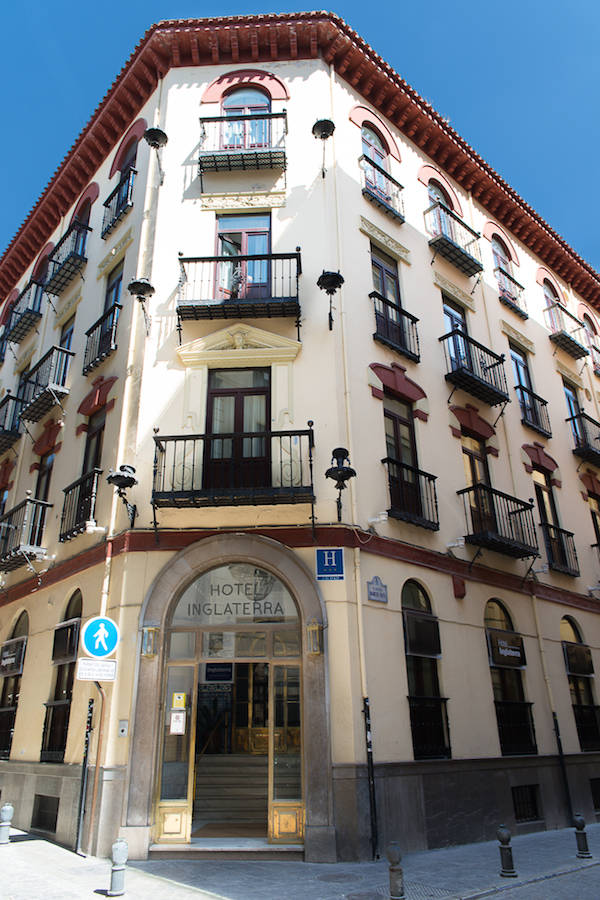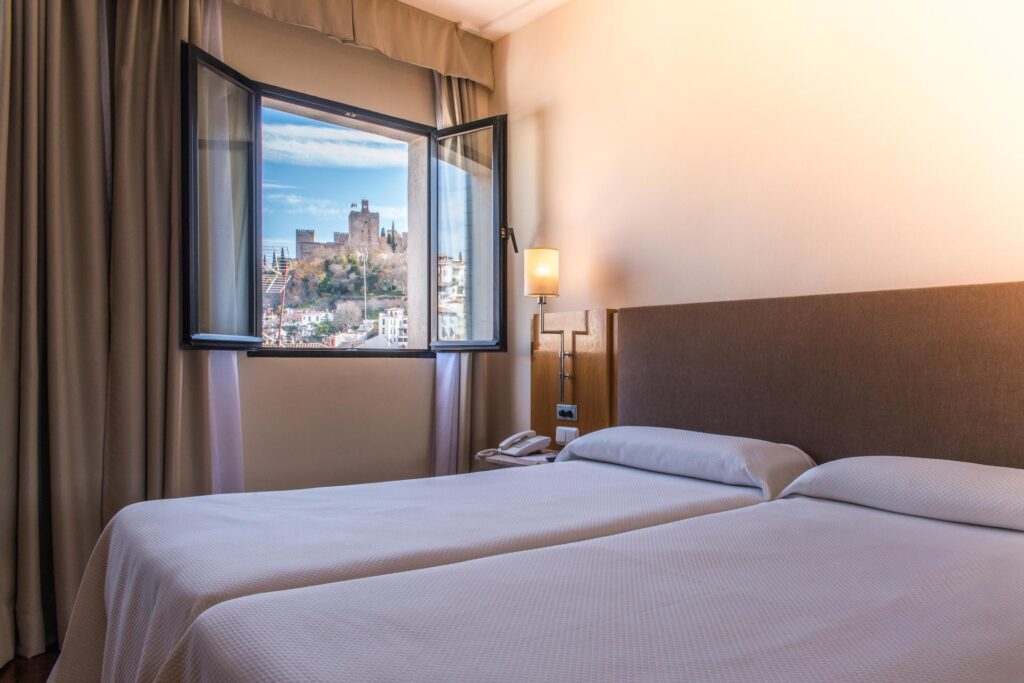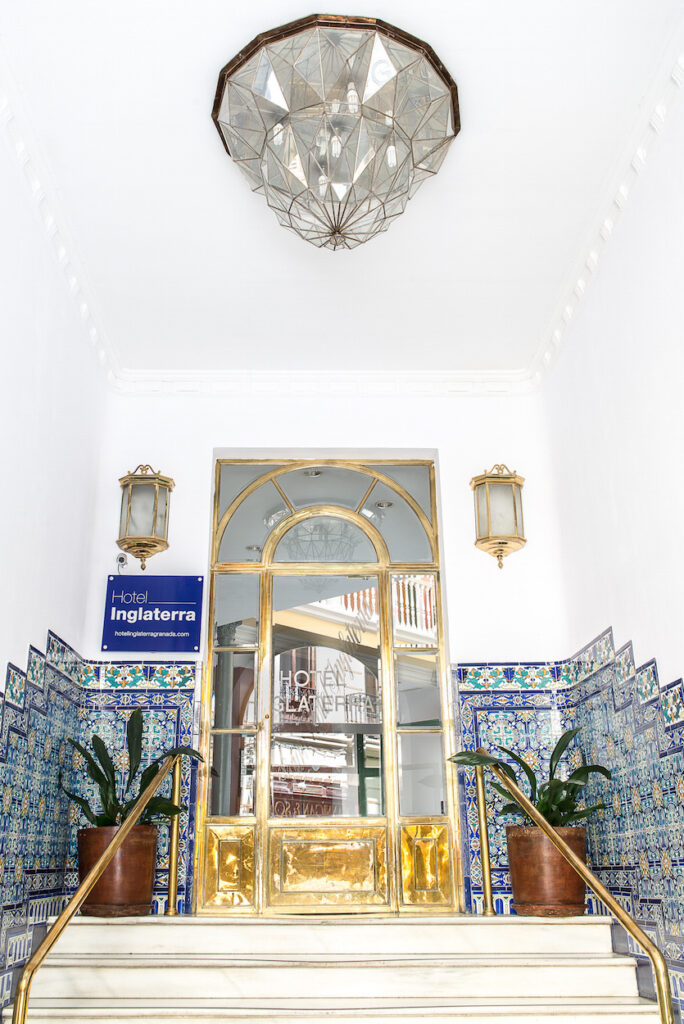Parmi les nombreux hôtes de marque qui ont séjourné à l’hôtel Inglaterra au cours de son histoire, la légende veut qu’Ava Gardner ait été l’une d’entre eux. Le Livre d’Honneur ne conserve qu’une partie des innombrables hôtes qui ont profité de l’Hôtel Inglaterra à Grenade. Un classique qui a su s’adapter au confort et à la technologie de notre époque sans jamais perdre le charme de son histoire, que nous allons maintenant retrouver dans les différents textes parus dans la presse.
Belle Epoque
At the beginning of the twentieth century, the world was living through what an English historian aptly called “the age of optimism”. This was the era also known as “la belle époque”, which was in reality just a glimmer of time, a blink of an eye, thirty miscounted years during which splendid lifestyles were reserved for members of a privileged and select social group, made up of the great families of European nobility, the prosperous financiers and businessmen of the time and, of course, the new American billionaires.
Grand Hotel Inglaterra
Those years marked the appearance of the first great hotels, the Ritz and the Palaces (in Granada we have one of them, the Alhambra Palace), hotels of singular luxury and refinement, as corresponded to the demands of that elegant society, which appreciated distinction and good taste above all things. That happy world of a few million fortunate people would be liquidated by the cannon fire of the First World War, but it would later re-emerge with new vigour, prolonging its last splendours until 1939, when a new and more terrible war conflagration would make it disappear, this time forever. It was precisely in this period, generally known as the inter-war period, that the Gran Hotel Inglaterra opened its doors in Granada.
ORIGINAL STAMP
Its original hallmark: On the corner of Cettie Meriem and Joaquin Costa streets, stands this architectural complex, originally designed by the architect Ángel Casas, one of the most representative men of good taste in Granada’s domestic architecture in the first third of the 20th century. Other notable works by this professional are the Banco Hispanoamericano on Gran Vía (now BSCH); the beautiful small palace on the same street, now the headquarters of the Subdelegación de Gobierno, and the house of the Gálvez pharmacy, in the Placeta de Cauchiles, among other works. The Hotel Inglaterra stands out for the fortunate solution of the corner and the elegance of its balcony. Ángel Casa avoided the vulgarity of the straight, rounded corner, replacing it with a brief chamfer (in which the semicircular arched doorway opens), which relieves the possible linear rigidity of the right angle with interesting grace and originality.like all the professionals of that generation, Ángel Casa had his personal stamp, without his own accent in all his works. Here, too, he distinguishes himself. It is perhaps a “minor” building among his own, but the architect did not neglect his sense of elegance, his extreme care to avoid monotony in the façade. This is clear to see. The play of the balconies and their different and imaginative ornamentation is attractive to the passer-by. On the central balcony, above the door, an elegant triangular pediment frames the face of a woman being pulled, a kind of allegory of victory. The reliefs on the balconies of the second floor and the graceful arches of the third floor are of similar interest. The complex, which extends in the form of flats along Cettie Meriem Street, is yet another example of the good work of one of Granada’s best architects of our century.
We have already said that this Gran Hotel Inglaterra began operating in the late 1920s, shortly before the world financial crisis of 1929 dealt a serious blow to international tourism. The first director and owner of the brand new hotel was a businessman already experienced in these matters: Manuel Morales Arias, who also owned the Hotel Nuevo Oriente (formerly El Navío), in Alhóndiga and Párraga streets. From the very first moment, the Gran Hotel Inglaterra (along with the Alhambra, the Washington Irving, the Victoria and the Paris) was announced as a first class hotel. At that time there was no star rating system to classify the category of the hotels, as it was a hotel rating that would come later, but there were different classes for the traveller’s information.
As a result of the civil war in 1936, the Gran Hotel Inglaterra was forced to remove the name Inglaterra from its façade. Nothing English, nothing French was then acceptable, so for a few years the hotel was simply called the Grand Hotel. At that time, full board at the hotel cost 30 pesetas a day. And there were times when guests had to pay 30 pesetas a day.




